No products in the cart.
Taxation
 Check the sample in the description
Check the sample in the description
 Loading...
Loading...
Byrd & Chen’s Canadian Tax Principles, 2020-2021 Edition, Volumes I and II , Clarence Byrd , Test Bank
Test Bank
Book Name: Canadian Tax Principles, 2020-2021
Edition :2020-2021 Edition
Author name: Clarence Byrd, Ida Chen
contact:
[email protected]
whatsapp +1 (949) 734-4773
 Check the sample in the description
Check the sample in the description Loading...
Loading...
$44.00 $80.00
Test Bank
Book Name: Canadian Tax Principles, 2020-2021
Edition :2020-2021 Edition
Author name: Clarence Byrd, Ida Chen
contact:
[email protected]
whatsapp +1 (949) 734-4773
 Check the sample in the description
Check the sample in the descriptionExam
Name___________________________________
ESSAY. Write your answer in the space provided or on a separate sheet of paper.
1) The major source of federal revenues is the personal income tax. Indicate three other types of taxes that
contribute to federal revenues.
2) What is the meaning of “person” when the term is used in the Income Tax Act?
3) Briefly describe the procedures used in calculating provincial income taxes for individuals in provinces other
than Quebec.
4) The Canadian income tax system is often used to achieve various economic objectives. Give three examples that
illustrate this point.
5) Provide an example of how taxation policy can be used to influence resource allocation.
6) The government pays a Canada Child Benefit to the parents of children who are under 18 years of age. The
payments are reduced by a percentage of income in excess of a specified level. What objectives are achieved by
this benefit system?
7) Indicate three disadvantages of a tax system that uses progressive rates.
8) A regressive tax is one that taxes high income individuals at lower effective rates. Explain why a sales tax
levied at a flat rate of 8 percent can be regressive.
9) Distinguish between horizontal equity and vertical equity as these terms are used in describing tax systems.
10) What are some of the factors that have led to the entrenched use of tax expenditures as opposed to program
spending?
11) While the Sections of the Income Tax Act are numbered 1 through 260, there are actually more than 260 Sections.
Explain why this is the case.
12) What purposes are served by Canada’s international tax treaties?
13) List four non-legislative sources of income tax information.
14) What is the meaning of “taxation year” as the phrase is used in the Income Tax Act?
15) Under what circumstances will a person who is not resident in Canada be required to pay Canadian income
taxes?
16) What is the importance of residence in Canadian income taxation?
1
17) When an individual leaves Canada, the CRA may take the position that he has retained his residence status.
What are the primary factors that the CRA will consider in determining whether such an individual has, in fact,
ceased to be a Canadian resident?
18) List three factors that would be considered in the determination of whether or not an individual is a resident of
Canada.
19) If an individual leaves Canada for a temporary absence, this raises the question of whether he was a Canadian
resident during the period of absence, particularly if some residential ties have been retained. What are the
major factors that are considered in determining whether an individual continues to be a Canadian resident
during a temporary absence?
20) One of your friends is leaving Canada and would like to know when he will no longer be considered a
Canadian resident. Briefly explain the rules related to terminating an individual’s status as a Canadian resident.
21) For the current year, Jane Doe is deemed to a Canadian resident because she sojourned in Canada for 210 days.
Also for the current year, Jack Fawn, a long-time resident of Manitoba, was considered a part year resident for
the first 210 days, after which he permanently departed from Canada. Explain how these two individuals will
be taxed in Canada.
22) It is possible that an individual could be considered resident in more than one country. In such situations,
“tie-breaker” rules are used to avoid the individual being subject to taxation in both countries. List and describe
three factors that would be considered in implementing the tie-breaker rules.
23) Are enterprises that are incorporated in Canada always considered to be resident in Canada? Explain your
conclusion.
24) Limon Inc. was incorporated in the U.S. five years ago. However, all of the directors of the corporation are
Canadian residents, holding all of their meetings in Montreal. How would Limon Inc. be taxed?
25) What are the components of Net Income For Tax Purposes?
26) ITA 3(b) states that a taxpayer should “determine the amount, if any”, by which taxable capital gains exceeds
allowable capital losses. In this context, what is the meaning of the phrase “the amount, if any”?
27) What is the difference between tax avoidance and tax deferral?
28) What is income splitting? Under what circumstances will it provide tax benefits to an individual?
29) Contributions to a Registered Retirement Savings Plan can be deducted to reduce the taxes of an individual in
the year that they are made. However, these contributions will be subject to tax when they are withdrawn from
the plan. What type of tax planning is involved in this arrangement?
30) Your client, a government employee, would like to reduce his taxes. He is trying to decide whether he should
contribute $5,000 to an RRSP this year. He has an RRSP as does his wife, a part time employee at a day care
centre.
Briefly describe the basic goals of tax planning. What advice would you give your client regarding his RRSP
contribution? Explain your conclusion.
Name___________________________________
ESSAY. Write your answer in the space provided or on a separate sheet of paper.
1) The major source of federal revenues is the personal income tax. Indicate three other types of taxes that
contribute to federal revenues.
2) What is the meaning of “person” when the term is used in the Income Tax Act?
3) Briefly describe the procedures used in calculating provincial income taxes for individuals in provinces other
than Quebec.
4) The Canadian income tax system is often used to achieve various economic objectives. Give three examples that
illustrate this point.
5) Provide an example of how taxation policy can be used to influence resource allocation.
6) The government pays a Canada Child Benefit to the parents of children who are under 18 years of age. The
payments are reduced by a percentage of income in excess of a specified level. What objectives are achieved by
this benefit system?
7) Indicate three disadvantages of a tax system that uses progressive rates.
8) A regressive tax is one that taxes high income individuals at lower effective rates. Explain why a sales tax
levied at a flat rate of 8 percent can be regressive.
9) Distinguish between horizontal equity and vertical equity as these terms are used in describing tax systems.
10) What are some of the factors that have led to the entrenched use of tax expenditures as opposed to program
spending?
11) While the Sections of the Income Tax Act are numbered 1 through 260, there are actually more than 260 Sections.
Explain why this is the case.
12) What purposes are served by Canada’s international tax treaties?
13) List four non-legislative sources of income tax information.
14) What is the meaning of “taxation year” as the phrase is used in the Income Tax Act?
15) Under what circumstances will a person who is not resident in Canada be required to pay Canadian income
taxes?
16) What is the importance of residence in Canadian income taxation?
1
17) When an individual leaves Canada, the CRA may take the position that he has retained his residence status.
What are the primary factors that the CRA will consider in determining whether such an individual has, in fact,
ceased to be a Canadian resident?
18) List three factors that would be considered in the determination of whether or not an individual is a resident of
Canada.
19) If an individual leaves Canada for a temporary absence, this raises the question of whether he was a Canadian
resident during the period of absence, particularly if some residential ties have been retained. What are the
major factors that are considered in determining whether an individual continues to be a Canadian resident
during a temporary absence?
20) One of your friends is leaving Canada and would like to know when he will no longer be considered a
Canadian resident. Briefly explain the rules related to terminating an individual’s status as a Canadian resident.
21) For the current year, Jane Doe is deemed to a Canadian resident because she sojourned in Canada for 210 days.
Also for the current year, Jack Fawn, a long-time resident of Manitoba, was considered a part year resident for
the first 210 days, after which he permanently departed from Canada. Explain how these two individuals will
be taxed in Canada.
22) It is possible that an individual could be considered resident in more than one country. In such situations,
“tie-breaker” rules are used to avoid the individual being subject to taxation in both countries. List and describe
three factors that would be considered in implementing the tie-breaker rules.
23) Are enterprises that are incorporated in Canada always considered to be resident in Canada? Explain your
conclusion.
24) Limon Inc. was incorporated in the U.S. five years ago. However, all of the directors of the corporation are
Canadian residents, holding all of their meetings in Montreal. How would Limon Inc. be taxed?
25) What are the components of Net Income For Tax Purposes?
26) ITA 3(b) states that a taxpayer should “determine the amount, if any”, by which taxable capital gains exceeds
allowable capital losses. In this context, what is the meaning of the phrase “the amount, if any”?
27) What is the difference between tax avoidance and tax deferral?
28) What is income splitting? Under what circumstances will it provide tax benefits to an individual?
29) Contributions to a Registered Retirement Savings Plan can be deducted to reduce the taxes of an individual in
the year that they are made. However, these contributions will be subject to tax when they are withdrawn from
the plan. What type of tax planning is involved in this arrangement?
30) Your client, a government employee, would like to reduce his taxes. He is trying to decide whether he should
contribute $5,000 to an RRSP this year. He has an RRSP as does his wife, a part time employee at a day care
centre.
Briefly describe the basic goals of tax planning. What advice would you give your client regarding his RRSP
contribution? Explain your conclusion.
 Loading...
Loading...

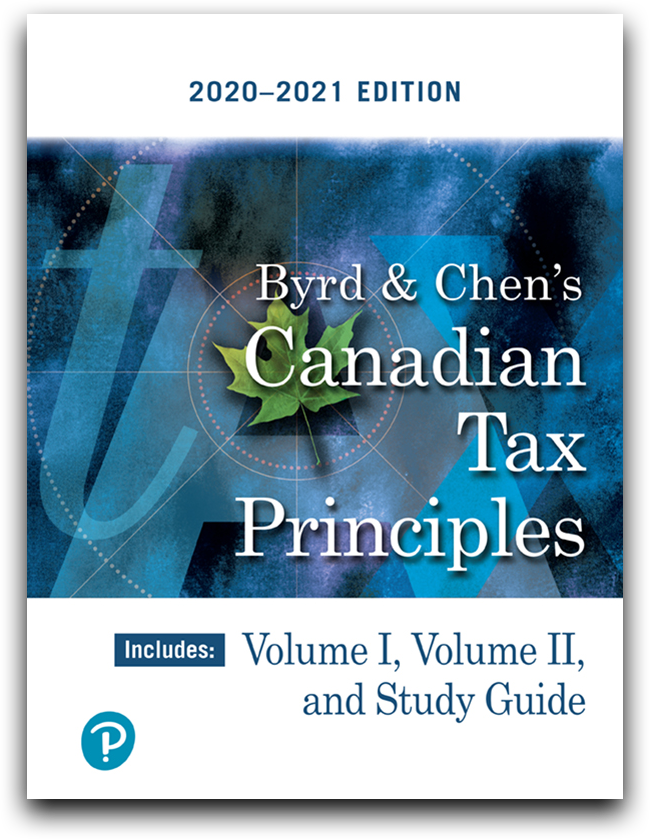
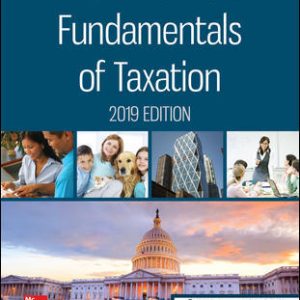
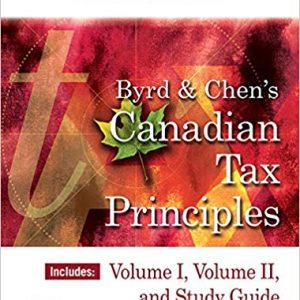
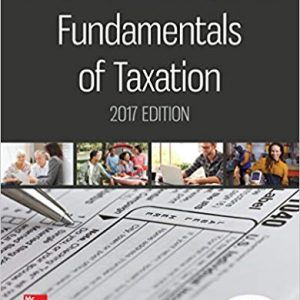
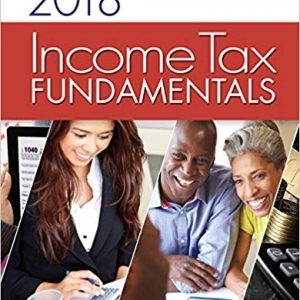

Mason (verified owner) –
Very well worth the money.
Mason –
Hayden (verified owner) –
Very well worth the money.
Hayden –